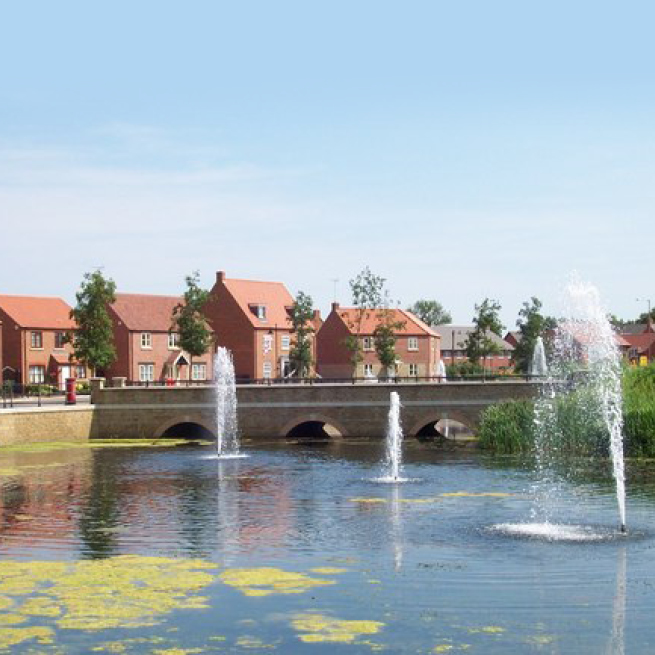Housing our community
Draft Objectives
Housing Our Community
Draft Objective NE1
To plan for a minimum of 100 new homes in sustainable locations which are well connected to local services and facilities.
Draft objective NE2.
To provide for a mix of house types, sizes and tenures which reflect the housing needs of Bourne.
Housing
The Local Plan covers the period 2011 to 2036. It indicates that 1,241 new homes were built in Bourne up to 2019 with planning permission for a further 734 homes, primarily at Elsea Park. It also allocates land for 107 additional dwellings on a site at Manning Road to the east of the town centre with SKDC’s own building programme expected to deliver a further 20 properties. The site at Manning Road is currently the subject of a planning application. The Local Plan requires the BPNP to allocate land for a further minimum of 100 new additional homes.
The Steering Group has written to land owners to find out which sites may be available for development and has subsequently been undertaking work to assess each site against a range of sustainability criteria to ascertain, for example, if there are any constraints that would prevent or restrict development and how well each site could be integrated into the town.
It is also evident from earlier consultation that there are concerns within the local community about the level of existing infrastructure and we are therefore seeking the opinion of providers on this matter.
However, we also need your thoughts on the draft objectives. Once we are confident that we have a set of objectives for the BPNP around which there is a general consensus we can assess each site against the objectives, including the benefits that each site might bring to the community. Once all of this information is available we will publish it to ensure that the local community can have an informed discussion as to the most appropriate site(s) to allocate for housing in the BPNP.
The BPNP also provides an opportunity to address the likelihood for other smaller developments or the redevelopment of existing sites within the town to come forward over the plan period. This could make an effective and appropriate use of available land within the town through regeneration, redevelopment opportunities or simply infilling of an existing gap or frontage within the street scene.
The Strategic Housing Market Assessment (SHMA) provides information on the mix of housing required to meet the needs of South Kesteven over the period to 2036. It concludes that the focus of market housing should primarily be on two and three-bed properties to reflect demand from new households and from older households downsizing to release equity from their existing homes. Similarly the key focus of affordable housing should be on two and three bed properties. The recommended broad mix is set out in the following table:
Housing need in South Kesteven
| 1-bed | 2-bed | 3-bed | 4+bed | |
| Market housing | 0-5% | 30-35% | 45-50% | 20-25% |
| Affordable housing | 20-25% | 40-455 | 25-30% | 5-10% |
The Strategic Housing Market Assessment (SHMA) provides information on the mix of housing required to meet the needs of South Kesteven over the period to 2036. It concludes that the focus of market housing should primarily be on two and three-bed properties to reflect demand from new households and from older households downsizing to release equity from their existing homes. Similarly the key focus of affordable housing should be on two and three bed properties. The recommended broad mix is set out in the following table:
Housing need in South Kesteven
The SHMA suggests that meeting the needs of older people will be of particular importance in the future. It forecasts growth of 55% in the population aged over 55 and 175% growth in those aged over 85 resulting in a demand for smaller properties, in part to encourage downsizing, together with an increasing need to deliver specialist or extra-care housing and property adaptations to enable people to remain independent within their own home. It also highlights demand from older persons for bungalows.
There aren’t any population projections available at a local level. However, if we look at what has happened in recent years Government statistics suggest that the population of the urban area of Bourne increased by 18% from 13,948 in 2011 to 16,470 by 2018. Over 50% of this increase was attributable to more people aged 65 and over. This group now account for almost 42% of the local population while the number of people aged 85 and over almost doubled from 215 to 422. In similar findings to the SHMA, a local estate agent has noted that there is significant demand for bungalows in Bourne and for properties suitable for first time buyers. However, bungalows are more wasteful of land than taller properties.
Data provided by SKDC shows that in April 2019 there were 170 households with a local connection to Bourne seeking social rented housing. Approximately 35% needed a 1 bed property; 30% required 2 bedrooms and a further 5% wanted either a 1 or a 2 bed property. Approximately 32% of households seeking 1 and 2 bed homes wanted a bungalow.

Supported By Bourne Town Council
Contact
Bourne Town Council
SK Community Point
3 Abbey Rd
Bourne
PE10 9EF
enquiries@bournetowncouncil.gov.uk

